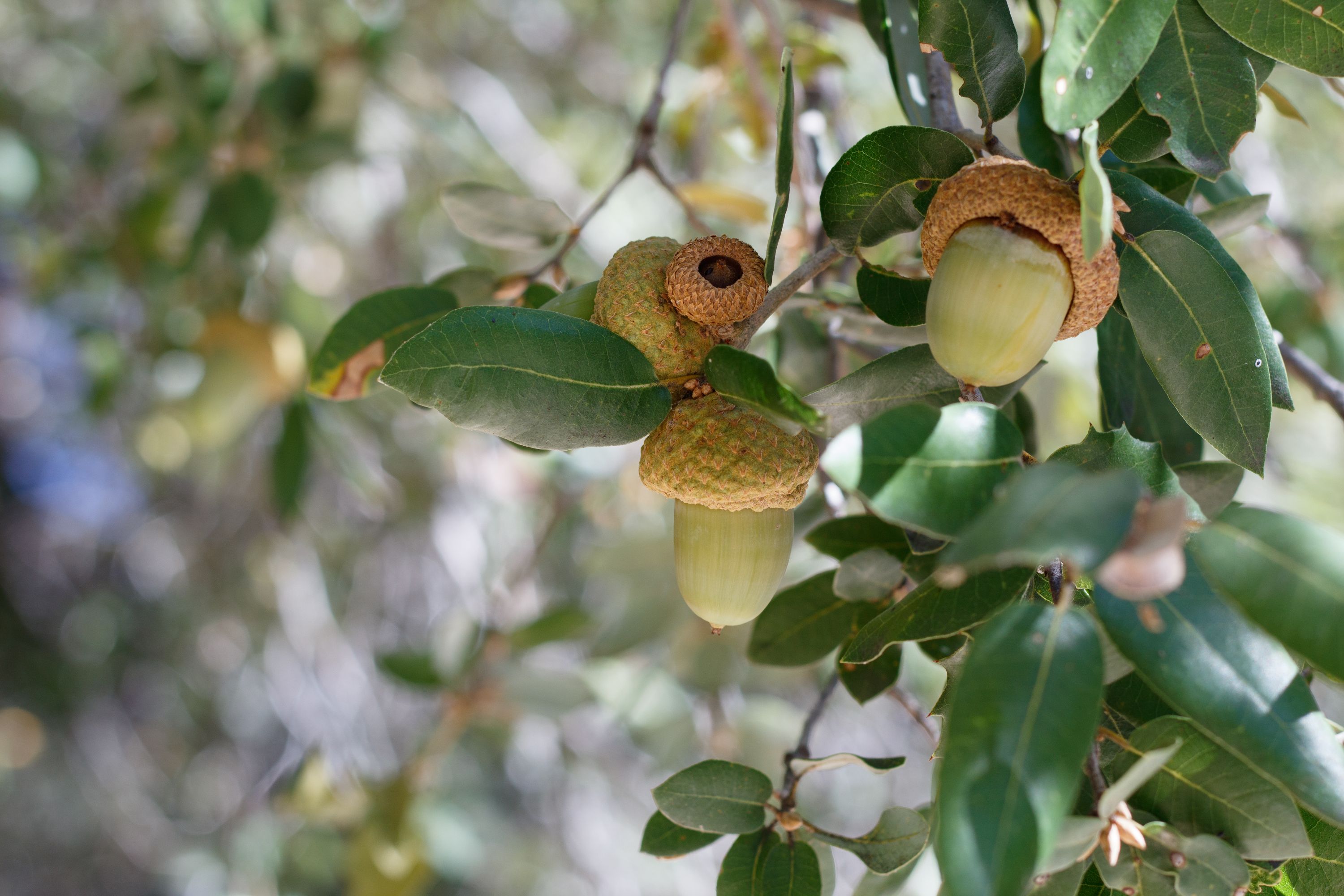Canyon live oak
(Quercus chrysolepis)

Description
Quercus chrysolepis, commonly termed canyon live oak, canyon oak, golden cup oak or maul oak, is a North American species of evergreen oak that is found in Mexico and in the western United States, notably in the California Coast Ranges. This tree is often found near creeks and drainage swales growing in moist cool microhabitats. Its leaves are a glossy dark green on the upper surface with prominent spines; a further identification arises from the leaves of canyon live oak being geometrically flat. Quercus chrysolepis is an evergreen tree with significant-sized spreading, horizontal branches, and a broad, rounded crown; it attains a height of 6–30 meters (20–100 feet) and is often forms as a shrub. The trunk diameter typically ranges from 30 to 100 centimeters (12 to 39 inches). Exceptionally large specimens are found in the mountains of Southern California, and rank among the largest oaks in North America. The largest known in the San Bernardino Mountains measures 38 m (124 ft) high, with a trunk circumference of 12 m (39 ft 4 in) and a crown spread of 30 m (98 ft). The elliptical to oblong leaves are 2.5 to 8 cm (1 to 3+1⁄4 in) in length and about half as wide; they are short-pointed at the tip, and rounded or blunt at base. Although the leaves appear generally flat, they may have edge margins slightly turned under, typically with spiny teeth, particularly on young twigs. These leathery leaves are a glossy dark green above, with a nether surface a dull golden down, often becoming gray and nearly glabrous the second year. The bark of the canyon live oak is grayish brown, and rather smooth or sometimes scaly. Acorns occur solitarily or in pairs, exhibiting lengths of 2–5 cm; these fruits are variable in size and shape, but generally ovoid, turban-like with a shallow, thick cup of scales densely covered with yellowish hairs; the stalk is barely evident. Q. chrysolepis is found in a variety of forest communities in the southwestern United States. It is common in the mountainous regions of California (Sierra Nevada, Coast Ranges, Klamath Mountains, Cascades, San Gabriel Mountains, etc.) with additional populations in the Siskiyou Mountains of southwestern Oregon, western Nevada, northern Baja California, Arizona, southwestern New Mexico, and Chihuahua. Southwestern New Mexico population are most likely the result of introgression from Quercus palmeri to Q. chrysolepis.
Taxonomic tree:







